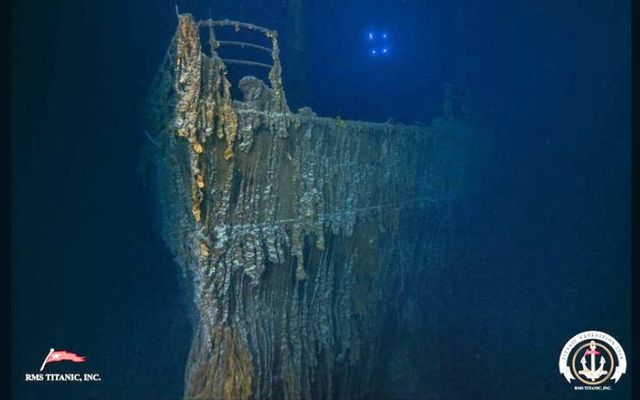The new images from the wreck of the Titanic show that more than a century after the famous ship sank, a large part of its iconic bow has decayed and fallen to the bottom of the North Atlantic Ocean.
The photographs were released by RMS Titanic, Inc. which conducts expeditions to the wreck of the ship.
Speaking about the discovery, the company said that after 13 days focused on the debris field, the expedition team was able to get their first glance at the bow on July 29 but were saddened by what they discovered.
The new images from #TITANICExpedition2024 reveal one thing for sure: #TITANIC is changing. After 112 years at the...
Posted by RMS Titanic, Inc. on Sunday, September 1, 2024
"The moment of excitement and anticipation was immediately shaken by a significant change to the familiar silhouette. The once miraculously intact railing surrounding the Bow’s forecastle deck was missing a 15-foot-long section on the port side," RMS Titanic, Inc. said in a statement.
Multibeam imagery confirmed that the section of the railing had fallen as one piece and was lying on the seafloor directly below.
"Although Titanic’s collapse is inevitable, this evidence strengthens our mission to preserve and document what we can before it is too late."
The iconic bow is known all over the world after being made famous in the 1997 movie "Titanic" where the character Jack had his memorable “King of the World” moment and taught Rose to fly.
A 2ft-tall bronze statue of Roman goddess Diana was also rediscovered on the seabed during the latest expedition.
It sat on the mantlepiece in the first-class lounge and was one of a number of artworks that adorned areas used by the ship's richest passengers.
Fine art decorated the halls and rooms throughout #TITANIC, but beauty is a delicate thing. Much of TITANIC’s fine art...
Posted by RMS Titanic, Inc. on Sunday, September 1, 2024
Ireland holds a strong connection with the Titanic voyage. The White Star Liner was constructed in Belfast, Northern Ireland and the the town of Cobh (then known as Queenstown) in County Cork was the ship's last port of call before it set sail for New York. On April 15, 1912, the Titanic tragically hit an iceberg and sank to the bottom of the North Atlantic.
Of the 123 passengers who boarded the ship in Queenstown, many of whom were Irish emigrants seeking a better life in America, only 44 survived the disaster.
RMS Titanic, Inc. was granted salvage rights to the wreck by a United States Federal Court order in 1994. The court award includes the exclusive rights to recover the artifacts from the wreck site.
RMS Titanic, Inc. has conducted eight research and recovery expeditions – 1987, 1993, 1994, 1996, 1998, 2000, 2004, and 2010.




Comments